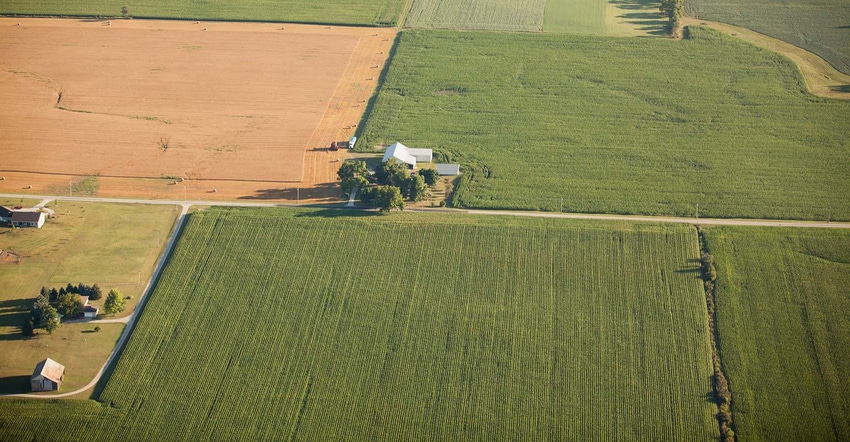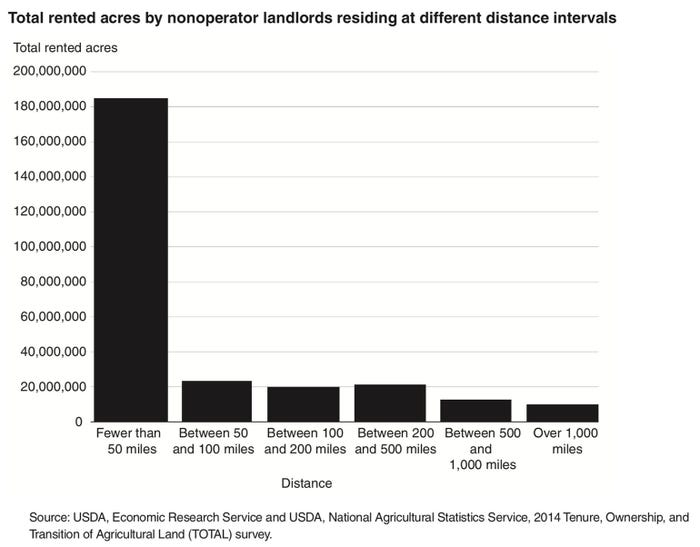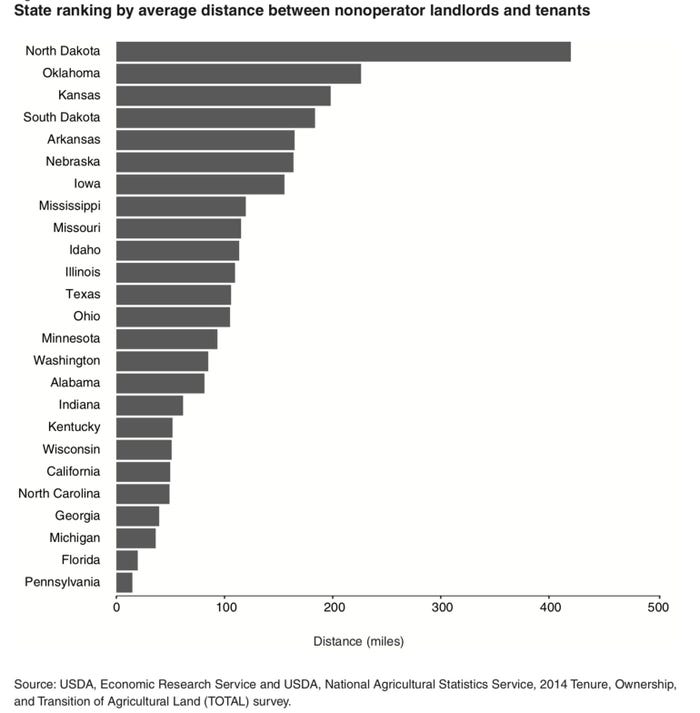April 2, 2021

An Economic Research Service report, Absent Landlords in Agriculture – A Statistical Analysis, examines the association between where landlords live and agricultural economic health.
What's the issue?
As part of the 2018 Farm Bill, USDA's ERS was directed to provide a report examining the effects that absent landowners have on the economic health of agricultural production, including land valuation, soil health and the economic stability of rural communities.
In 2014, 39% of farmland acreage in the 48 contiguous states was rented. Of this share, 80% was owned by landlords who did not operate farms. Nonoperating absent landlords may have different impacts on the long-term economic health of agricultural production than landlords who live in the same region.

The study examined the location of nonoperating landlords relative to the location of their farmland to determine how that varies geographically. Landlords are concerned absent landlords if they don't operate a farm and are located 100 miles or more from the farmland they own.
What did the study find?
Distances between nonoperating landlords and their tenants vary considerably. Many landlords reside thousands of miles from their agricultural land, but in the 25 states measured in 2014, the majority of nonoperating landowners resided within 100 miles of the parcels they rented out. In the Midwest, the distance between landlord and tenants was significantly shorter than distances between landlords and tenants on the east and west coasts.

The prevalence of absent landlords was consistently higher in counties and states with lower rents and land values and weaker indicators of local economic development.
There was no statistical association between the percentage of absent landlords and the percentage of acres utilizing conservation tillage or no-till farming practices in 2017. However, higher shares of absent landlords in a state are associated with a larger increase in acreage utilizing these practices as well as in the number of practices used from 2012 to 2017. Conversely, states with a higher percentage of absent landlords had a lower percentage of cropland with cover crop usage in 2017, but there was no statistical association between the percentage change in cover crop usage over the period studied.

How was the study conducted?
Distance between the landowner and the approximate location of the land they rent out was measured using geocoding techniques based on the nonoperating landlords's mailing address and approximate location of the land they rent out from the USDA’s 2014 Tenure, Ownership, and Transition of Agricultural Land survey. Information from the 2012 and 2017 Census of Agriculture was also used as were statistics from the Bureau of Economic Analysis.
Click the download button below to download the report.
Source: USDA ERS, which is solely responsible for the information provided and is wholly owned by the source. Informa Business Media and all its subsidiaries are not responsible for any of the content contained in this information asset.
You May Also Like




